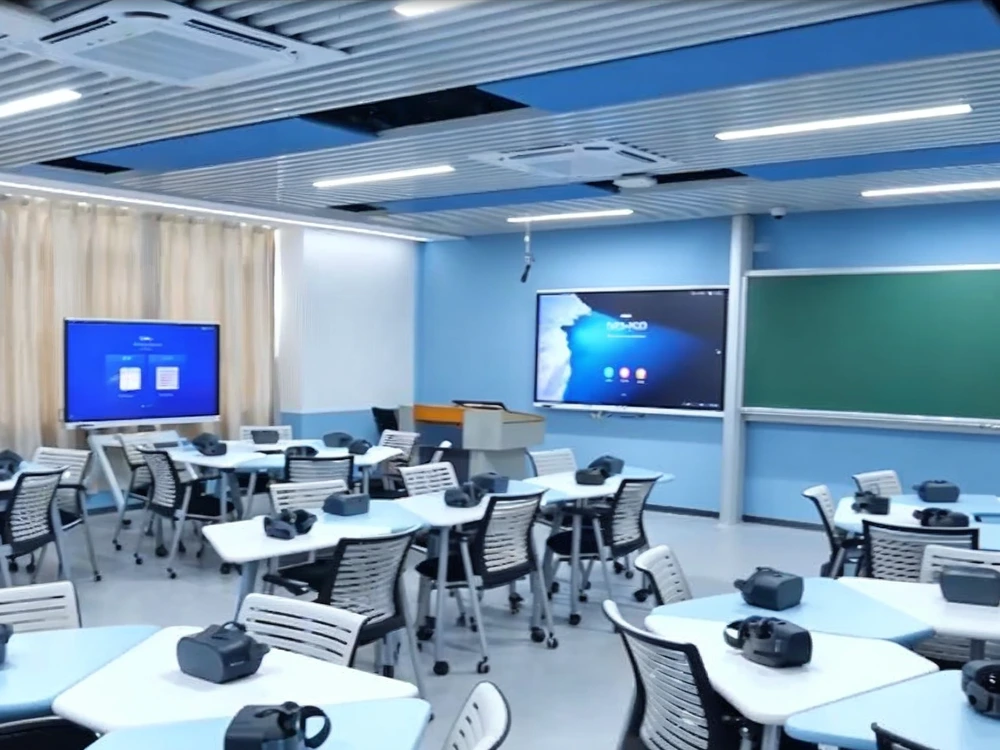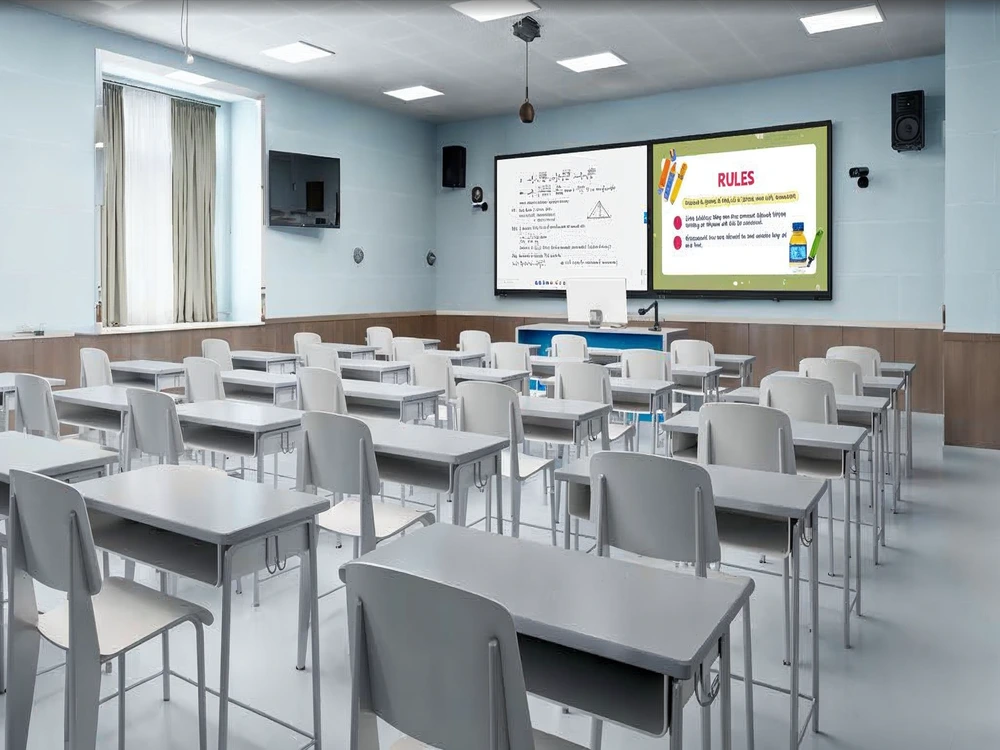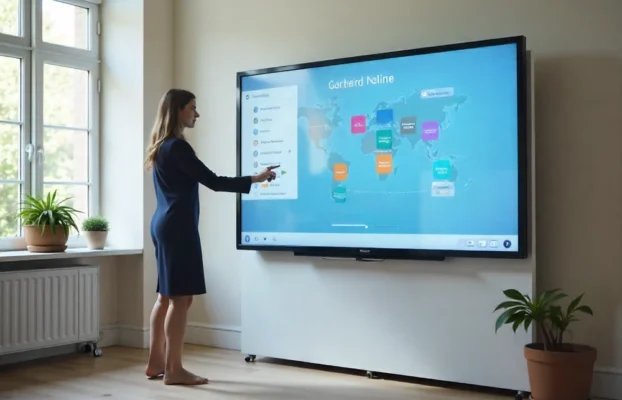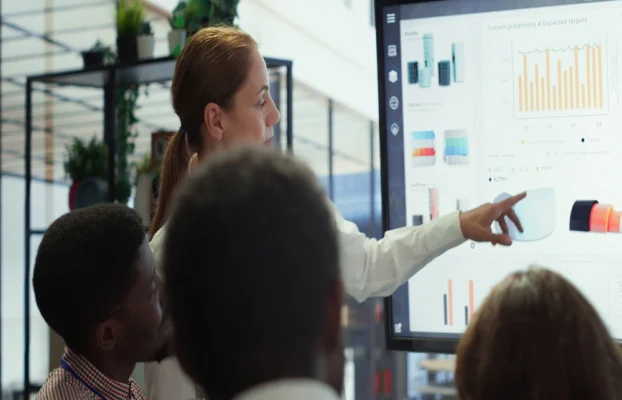Smart Classroom with Smartboards – Revolutionizing Modern Education
The smart classroom is redefining how students learn and teachers teach. With digital tools like interactive smartboards, modern classrooms are evolving into dynamic, engaging, and collaborative spaces that enhance the overall educational experience.
In this blog, we’ll explore how smartboards are shaping the smart classroom, the benefits they bring to teachers and students, and why they are essential for the future of education.
What is a Smart Classroom?
A smart classroom is a learning space equipped with digital technologies that promote interactivity, connectivity, and personalized learning. These classrooms often include high-speed internet, cloud-based learning platforms, digital assessment tools, and interactive devices like tablets, computers, and most importantly, interactive smartboards.
Unlike conventional classrooms that rely heavily on passive learning methods, smart classrooms encourage students to actively participate, collaborate, and engage with content through interactive learning experiences.
Smart classrooms also support hybrid and remote learning, making education more accessible across different locations. This flexibility helps schools continue teaching even during unforeseen disruptions such as pandemics or natural disasters.
Why Smartboards Are the Core of Smart Classrooms
Smartboards have become a central feature in modern classrooms due to their versatility and functionality. Here’s why:
1. Interactive Learning
Smartboards allow teachers and students to write, draw, and manipulate content directly on the screen using a finger or stylus. This hands-on approach helps students better understand concepts through visual and kinesthetic engagement.
2. Multimedia Integration
Teachers can seamlessly incorporate videos, animations, presentations, quizzes, and even web content into their lessons. This not only makes classes more engaging but also supports different learning styles, from visual to auditory learners.
3. Real-Time Collaboration
With features like screen sharing and cloud integration, students can collaborate on group projects in real-time, even from remote locations. Teachers can also share notes instantly, making learning more accessible and inclusive.
4. Improved Classroom Management
Smartboards come with built-in classroom management tools, such as timers, polls, and annotation features, which help streamline lesson flow and keep students focused.
5. Sustainable and Cost-Effective
By going paperless and reducing the need for printed materials, smartboards contribute to environmental sustainability. Over time, schools can save costs on markers, whiteboards, and maintenance.
Real-World Application: The Malaysian Classroom
In Malaysia, the government and private educational institutions are increasingly adopting smart classroom solutions to align with national digital transformation goals. Schools are investing in Arvia Smartboards, for instance, which offer advanced features such as dual operating systems (Android & Windows), 4K ultra HD resolution, built-in wireless screen sharing, and even AI teaching assistants.
These tools not only modernize the classroom but also prepare students for a tech-driven workforce by introducing them early to digital collaboration tools. Some schools have reported improved attendance and student enthusiasm when lessons are more interactive and technology-driven.
With the push for Sekolah Digital initiatives by the Ministry of Education Malaysia, the smart classroom is becoming more than a concept — it’s a national priority. Schools that adopt these changes early are paving the way for more advanced and holistic education systems.
Challenges and Considerations
While smartboards offer significant advantages, implementing them requires proper teacher training, stable internet connectivity, and consistent technical support. Educators must be equipped with the skills and confidence to use these tools effectively, which is why professional development and hands-on training are crucial.
Additionally, schools must ensure regular maintenance and software updates for smartboards to function optimally. Planning ahead for long-term tech support and budgeting is essential to sustain the benefits of a smart classroom setup.
The Future is Smart
As technology continues to evolve, adopting tools like smartboards in a smart classroom is no longer optional — it’s essential. Schools that embrace this transformation will not only enrich their teaching methods but also equip students with the digital skills they need for the future workforce.
In a world where information is readily accessible, the focus of education is shifting towards skills like critical thinking, collaboration, and adaptability — all of which can be enhanced with smart classroom technology.
Need Help Going Smart?
At Arvia Solutions, we specialize in transforming traditional classrooms into smart learning spaces. Explore our range of interactive smartboards and book a free demo today. Let’s build a future-ready classroom together.









